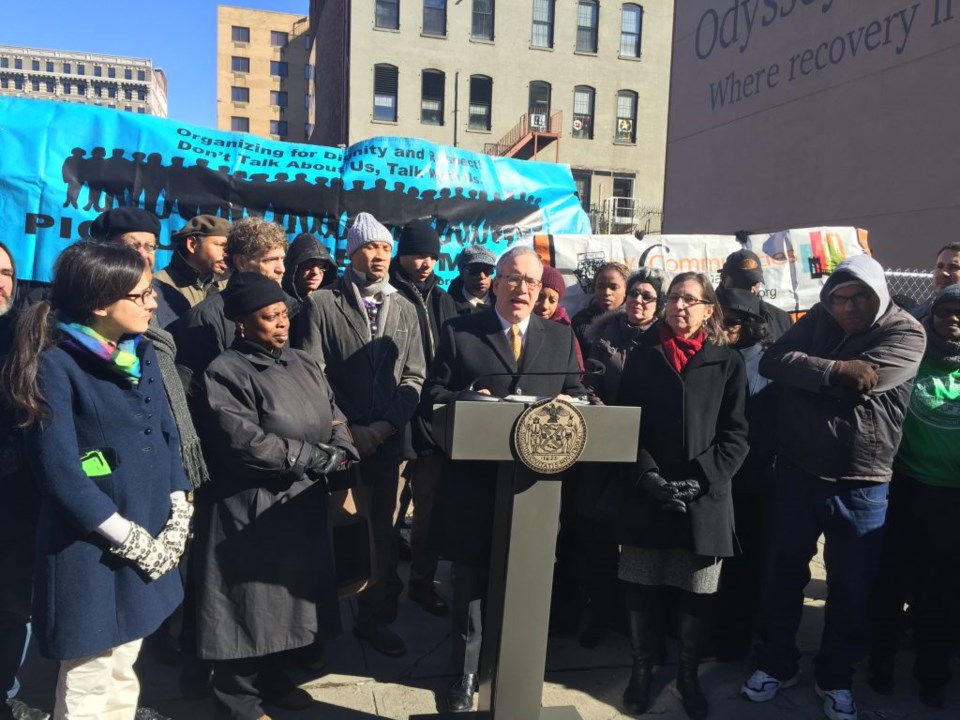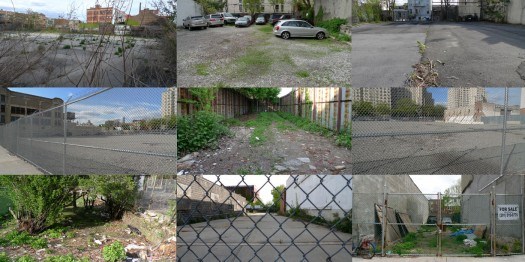
According to a recent study, Kings County (Brooklyn) is now the least affordable county in the nation. The news is certainly no surprise to the thousands of Brooklynites no longer able to afford the skyrocketing rents. Many have left or are now leaving or are seeking refuge in shelters.
In fact, the city's shelter population is 10 times the size of other big cities', largely because New York is one of the few places legally required to provide housing for those without it, reported The New York Times earlier this month.
But is dumping more money into homeless shelters the best solution for the city, and is there really no more space left in the city upon which to build affordable housing?
New York City Comptroller Scott M. Stringer asserts there is in fact another way.
An audit released by the comptroller at a press conference on Wednesday revealed that across the five boroughs, the City owns over a thousand vacant lots, with nearly half of those properties-- 556-- existing in the borough of Brooklyn alone and several having sat empty for nearly 50 years.
"When the City owns property, we get to call the shots about how land is developed and for whom, which is why these properties are so valuable," Stringer said.

According to the Department of City Planning, 7.1 percent of New York City's land is vacant and, for the most part, underutilized. This is a rate much lower than the national average of 15 percent (in some cities the rate of vacant land is as high as 45 percent).
The audit found that as of September 2015, the City identified 1,131 vacant lots that it owned across the city.
- Brooklyn — 556 properties
- Queens — 363 properties
- The Bronx — 112 properties
- Manhattan — 98 properties
- Staten Island — 2 properties
Of the 992 properties with a known acquisition date:
- 231 (23 percent) had been owned and left vacant by the City for 40-50 years
- 513 (52 percent) had been owned and left vacant by the City for 30-39 years
- 170 (17 percent) had been owned and left vacant by the City for 20-29 years
- 46 (5 percent) had been owned and left vacant by the City for 10-19 years; and
- 32 (3 percent) had been owned and left vacant by the for 0-9 years.
Along with the audit findings, Stringer released a followup report, Building an Affordable Future: The Promise of a New York City Land Bank, asserting that many of these lots could be effectively used to build 57,000 units of affordable housing.
"If we want to give every New Yorker a fair and fighting chance to make it in the City, we need to use every tool in our toolbox to create and preserve truly affordable housing," said Stringer. "Today, I am proposing the creation of a New York City Land Bank that could turn these vacant lots and other properties into sites for thousands of permanently affordable units."
Underutilized space in a city environment can be a source of creative inspiration for urban agriculture (community gardens), public parks, housing and other community spaces. However, a bevy of environmental health and safety issues must be considered before development, wrote Urban Omnibus. Contaminated lots are known as brownfield sites, and the remediation necessary before development can take place is often a lengthy and expensive process.
At a time when the City has lost over 400,000 apartments renting for $1,000 or less and more than half of New Yorkers spend more than one-third of their income on rent, it's time to explore other options for rent affordability.
"With thousands of vacant and tax-delinquent sites across the City, we need to find innovative ways to rid our communities of blighted properties and replace them with housing for all families," said Stringer. "A New York City Land Bank is one way that the City can use the resources it already has to create permanently affordable housing for people of all income levels."
Rather than the City hoping (begging that) developers do the right thing in setting aside "affordable housing," maybe it's time the City do the right thing and develop the affordable housing itself.
To read the full report, Building an Affordable Future: The Promise of a New York City Land Bank go here.



